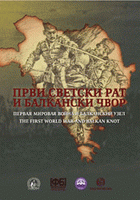
Collection of Papers of Institute of Contemporary History
Zbornik radova Instituta za savremenu istoriju
Collection of Papers of Institute of Contemporary History
More...
Collection of Papers of Institute of Contemporary History
More...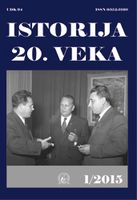
The Journals ISTORIJA 20. VEKA is published by the Institute of Contemporary History, Belgrade.
More...
The automobile industry in Yugoslavia started in 1954 at the Crvena zastava factory in Kragujevac. A year before that, the workers` council at the former armament factory voted for introducing cars into their production. The licence was purchased from FIAT in 1954, and a small FIAT vehicle (fiat 600) was assembled at the small range. The new automobile factory was built with the start-up investment of 30 million dollars by FIAT in 1962, for the yearly output of 32 000 cars. It was soon rebuilt and expanded its capacity for the output of 82 000. That marked the beginning of the large scale automobile industry in Yugoslavia. Cars, especially the small-engine ones, were in high demand in the 1960s, but due to the small purchasing power of the Yugoslav population, they were mostly sold on credit. The most popular was "zastava 750", in production for the next 30 years. The Crvena zastava car factory started exporting its products in the early 1960s.
More...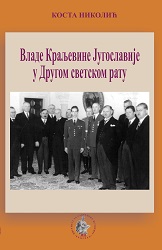
The Yugoslav Royal Government, having gone abroad, was accepted by the Allies as the only constitutional representative of the Kingdom of Yugoslavia. The reputation acquired by the events of March 27th additionally helped the Government and King Petar to be regarded as the holders of the national continuity of the Yugoslav state. With the recognition of the Government, the integrity of the territory of the Kingdom of Yugoslavia was acknowledged. The Royal Government was in favour of continuing the struggle against the occupying forces and therefore was accepted as a government of an Allied state. In a statement issued at the end of June 1941, British Prime Minister Winston Churchill confirmed that the Government of the Kingdom of Yugoslavia retained all the attributes of the sovereign power.
More...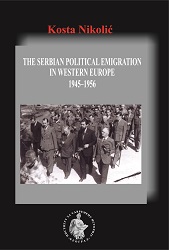
The book on the Serbian political emigration in Western Europe after World War II consists of two main parts. The first part is devoted to biography of General Miodrag Damjanović; second part explores the forming of the Serbian political emigration after the defeat of Serbian and Yugoslav anti-communist military forces at the end of the war. Political emigration occurred in Italy, Germany and Great Britain. Many of these people later moved to the United States of America and Australia. This book examines their lives. The biography of Miodrag Damjanović, a General in the Army of the Kingdom of Serbia, presents a life story of a Serbian officer, a representative of the military elite whose peak was reached just before WW II, only to experience a steep downfall that at the same time meant the destruction of their career, as well as of the society whose prisoners they were and whom they served faithfully.
More...
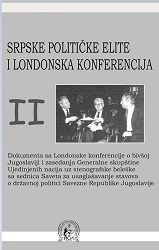
These two volumes contains selected documents focused on the first round of negotiations within the Internatonal Conference on the former Yugoslavia, organized in London in August 1992 by United Nations and European Community. Alongside with the versions of the offered settlement the volumes contain detailed records of inter nal debates of representatives of Serbian political elites from Federal Republic of Yugoslavia, Serbia and Montenegro. These debates, inscribed in minutes of the Council for Harmonization of the State Policy of the President of FRY are shedding important light on the wartime decision-making, as well as on the balance of power and differences of opinions within the Serbian side. Attached to the volume are also personal recollections of the protagonists.
More...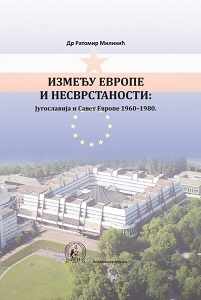


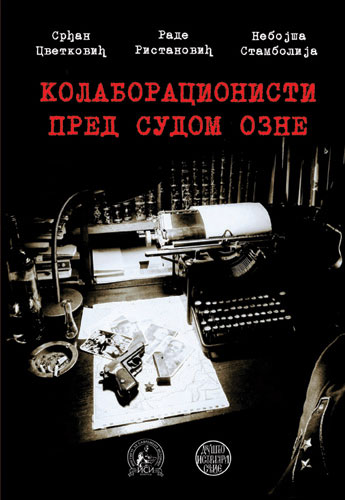
Keywords: collaborationist administration;serbia;world war II;german occupation;
U ovoj knjizi su predstavljena, kritički priređena, saslušanja u Odeljenju za zaštitu naroda (OZN-i) vodećih i vrlo važnih ličnosti kolaboracionističkog aparata u Srbiji 1941–1944: predsednika kolaboracionističke vlade Milana Nedića, upravnika grada Beograda i šefa Srpske državne bezbednosti Dragog Jovanovića, komandanta Srpskog dobrovoljačkog korpusa (SDK) Koste Mušickog i ministra unutrašnjih poslova Tanasija Dinića. Sva lica su nakon povlačenja izručena od strane saveznika u drugoj polovini 1945. i početkom 1946. godine. Saslušanja su uglavnom bila u zgradi OZN-e za Srbiju koja se nalazila na uglu Zmaj Jovine i Braće Jugovića u Beogradu pored zloglasnog istražnog zatvora Glavnjače (gde je danas zgrada fakulteta prirodnog i matematičkog usmerenja) gde su bili zatvoreni. Saslušanja je, najčešće, vršio Milorad (Mile) Milatović, tada major OZN-e, koji se kasnije istakao i u drugim važnim procesima (Draža Mihailović, Andrija Hebrang, Lazar Marković). Originali dokumenata koja se priređuju nalaze se u Vojnom arhivu i Istorijskom arhivu Beograda.Od četvorice saslušavanih niko nije preživeo. Milan Nedić je zvanično izvršio samoubistvo skakanjem kroz prozor zgrade OZN-e. Dragi Jovanović, Tanasije Dinić i Kosta Mušicki osuđeni su na smrt na procesu generalu Dragoljubu Draži Mihailoviću i streljani su posle presude 17. jula 1946. Pretpostavlja se da je mesto egzekucije na osnovu iskaza i pisanja visokih oficira OZN-e (Slobodana Krstića Uče) na Adi Ciganliji, ali za sad to nije doživelo naučnu potvrdu.
More...